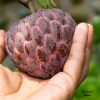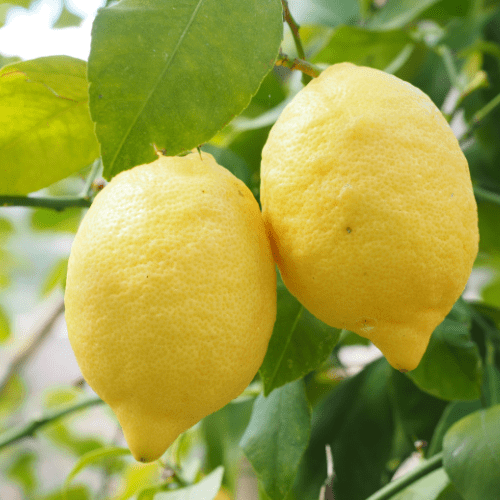Position
Red custard apples thrive in tropical and subtropical climates. They prefer temperatures between 18°C to 29°C. They can tolerate temperatures as low as -1°C for short periods but are best kept in frost-free environments.
Full sun is ideal. The tree needs at least 6 to 8 hours of direct sunlight daily to produce fruit effectively.
Plant the tree about 5m apart from other trees to allow for their wide canopy.
Soil
Water the tree well after planting and keep the soil moist but not soggy. Well-drained, sandy loam or loamy soil is best, avoid waterlogged or heavy clay soils. Incorporating organic matter such as compost or well-rotted manure improves soil drainage and fertility.
Slightly acidic to neutral soil, with a pH range of 6.0 to 7.0, is preferable.
Mulch
Apply mulch around the tree’s base to retain soil moisture, regulate soil temperature, and suppress weeds.
Fertilising
Use a balanced, slow-release fertiliser designed for fruit trees. Organic options like compost or well-aged manure can also be beneficial.
Fertilise in early spring as new growth begins and again in mid-summer. Alternatively, apply our slow-release (berry fertiliser)all-plant fertiliser. Apply one teaspoon every 4-5 months. The roots will absorb what they need.
Mulch
Use 2 to 5 centimetres of pine bark mulch to protect the roots from UV damage and drying out. The mulch retains moisture and maintains an optimal pH. Do not let the mulch touch the plant stem, as it may cause infection or rot.
Pruning
Prune the tree to maintain a manageable size and shape. Remove dead or diseased branches to improve air circulation and reduce the risk of disease.
Pollination
Red custard apples are usually self-pollinating, but cross-pollination can improve fruit set and quality. Planting multiple trees can enhance fruit production.
The flowers attract bees and other pollinators, which help with fertilization.
Pests and Diseases
Watch for common pests such as aphids, scale insects, and fruit flies. Regular inspection and appropriate pest control measures can help manage these issues.
Be mindful of fungal diseases like anthracnose and root rot. To reduce disease risk, ensure good air circulation and avoid overwatering.
Agricultural Neem Oil or Effective Microorganisms (EM Control ) will assist in either prevention or after the fact. If you already have aphids or mites, wash the tree with a harsh hosing, and when dry, spray with Neem oil or EM Control. Nectarine trees need regular spraying before the onset of fruit and immediately after buds turn to small fruit. Continue organic spraying regularly for good-quality peaches.
Harvesting
The fruit is ready to harvest when it has a slightly soft texture and a rich, deep red color. Gently squeeze the fruit; it should give a little under pressure.
Handle the fruit carefully to avoid bruising. If it’s not fully ripe at harvest, allow it to ripen at room temperature.






